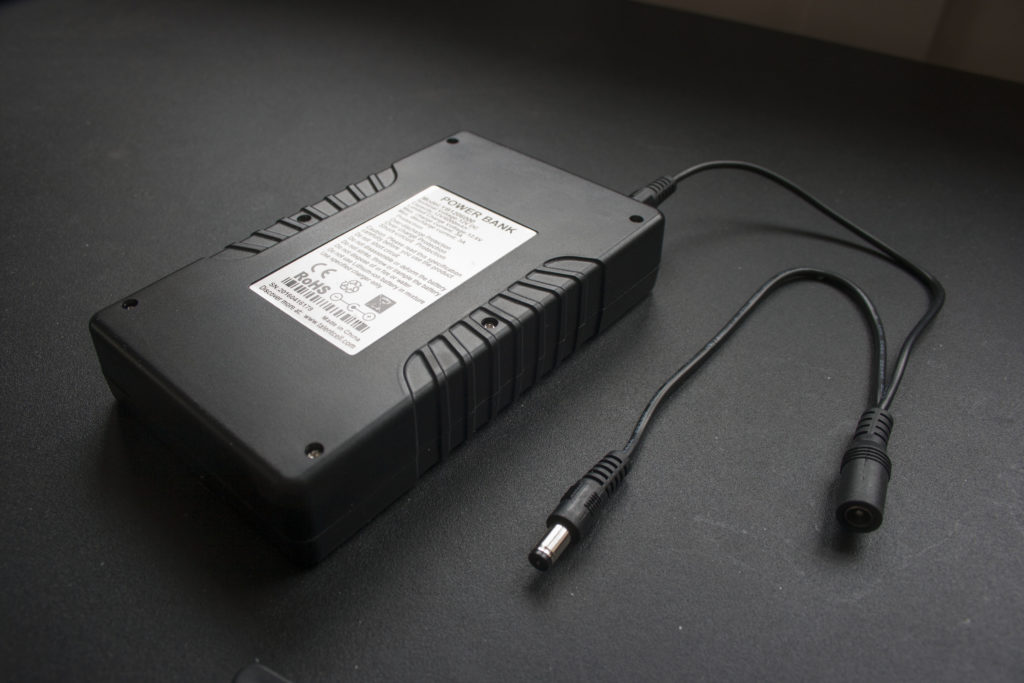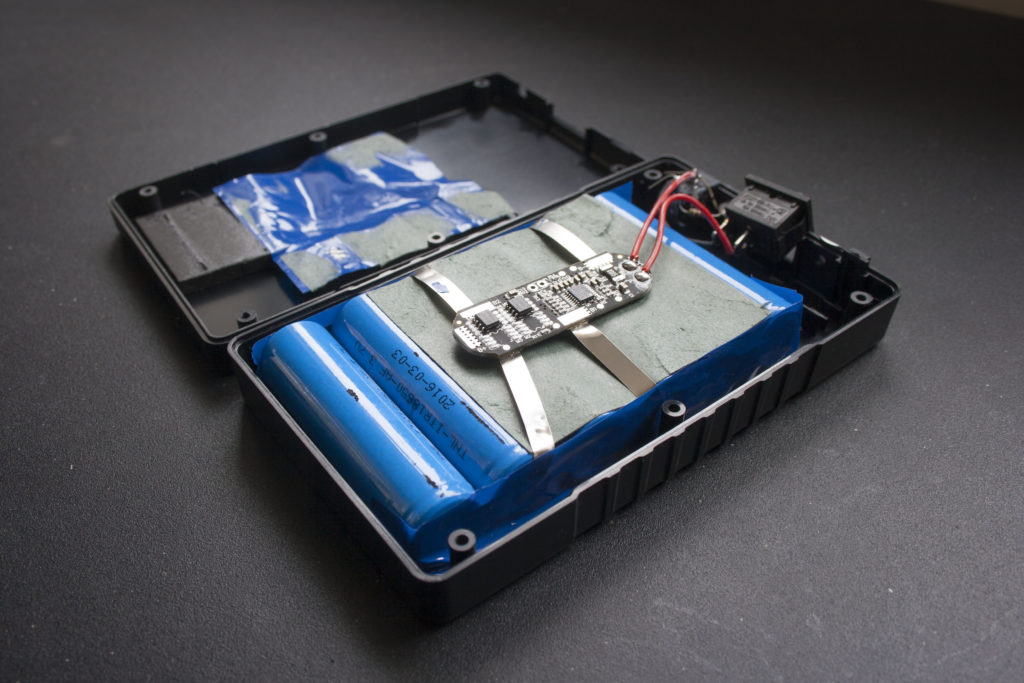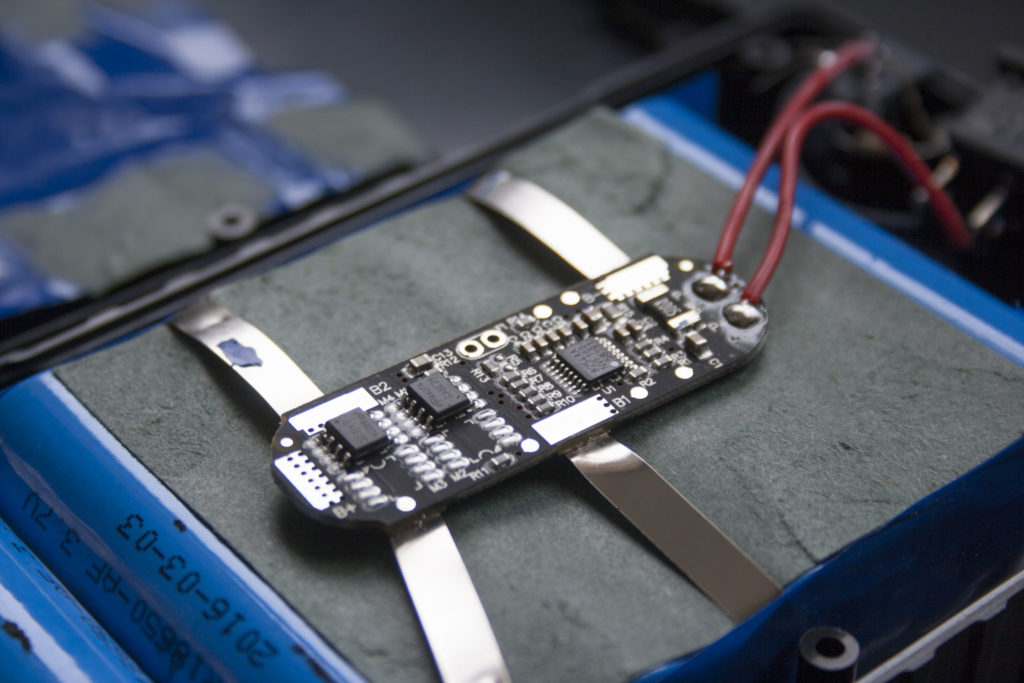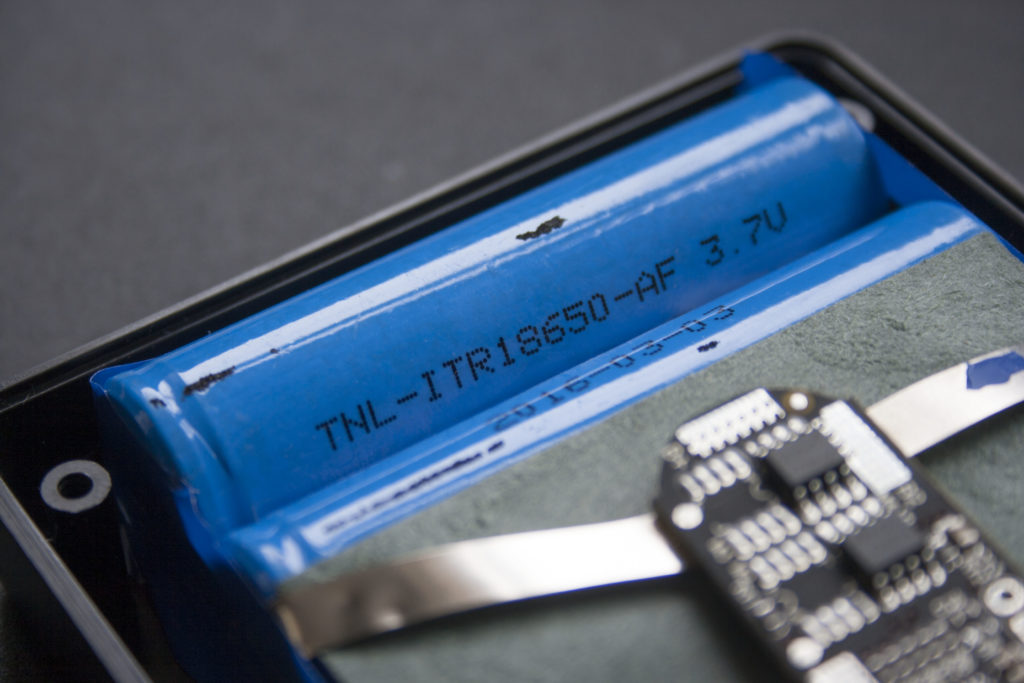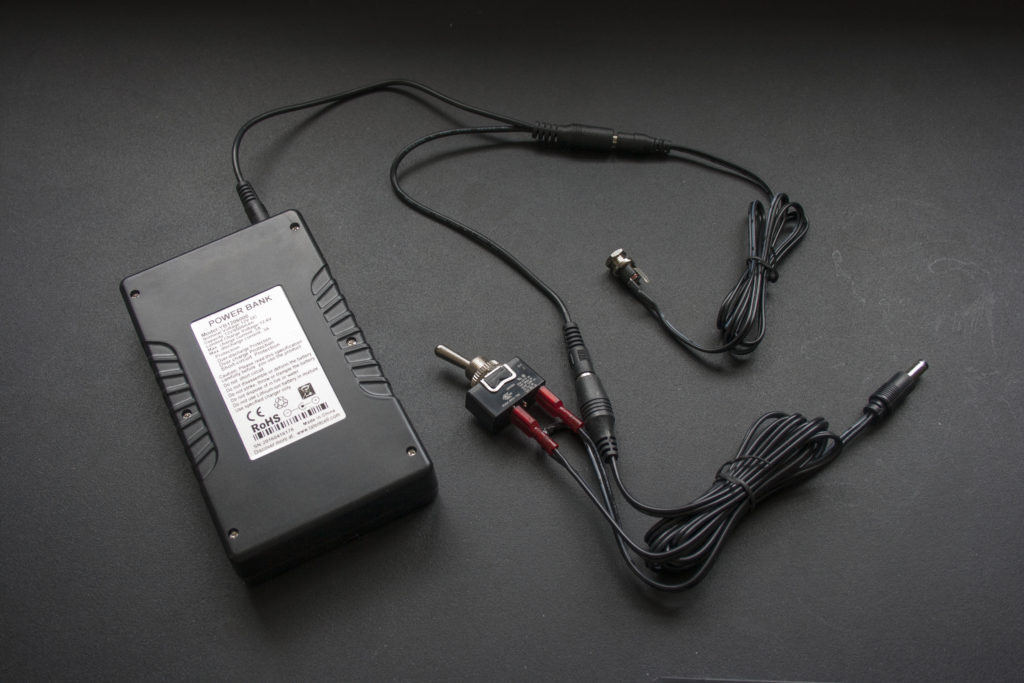As with speakers, I’m often asked what the best battery to use with my proton pack kit is.
The proton pack kit requires around 12V to function. A little less, or a little more is okay, with a 14.4V battery pack being the absolute recommended maximum. (The true maximum is actually a bit higher than this, but a 14.4V lithium pack won’t exceed that.)
Is there any advantage to more voltage? Well, not really. The gain on the amplifier is set such that over 12V the audio will begin clipping, so while it might sound a bit louder the audio quality will be somewhat reduced. So for that reason, I recommend a 12V battery pack. I designed the kit for 12V because 12V battery packs are extremely common, while higher voltage packs are more expensive and hard to come by. And the e-cig foggers that Fincher & Son sell for use with my kits are also designed to run at 12V and higher voltages will likely damage them. So for everyone’s sanity, stick to 12V.
Now there’s a lot of options available for a 12V supply, but the most common are lithium-ion aka “lipo”, alkaline, or lead acid.
The disadvantages of alkaline and lead acid are that they’re extremely heavy. Alkaline also has a high internal resistance which means the voltage droops when the amplifier in the kit tries to draw a lot of current. This kills the bass. And of course you can’t recharge alkaline, so C cells will last you a few hours, and D cells a couple days and then you have to replace them. And the voltage also drops as they discharge so the pack will get quieter over time. And lead acid, well because they’re so heavy I don’t recommend them at all, but they can source plenty of current and have high capacities. You’re on your own finding a charging solution if you choose that route, but it shouldn’t be too hard to get a charger since you can find them on the shelf at any auto parts store or Walmart.
So the battery I recommend for use with the packs is lithium-ion. Li-ion batteries have high capacities, can source large amounts of current, are very lightweight, and can be recharged easily; if you get the right li-ion battery pack.
Now, you may have heard of lipo batteries for remote control vehicles, and those are fine, but as they’re designed to supply huge amounts of current far in excess of what my kit requires, they can be a pain to charge and maintain. They have no built in protection circuits for overcharging or over discharging, and either of those can be dangerous and either cause a fire, or kill the battery.
So I recommend you stay away from those, and instead look at what are known as power banks. Power banks are often used for charging cellphones, or powering laptops and cctv cameras. The ones for laptops and CCTV cameras are the sort you’re looking for, because they’ve got a 12V output with a 5.5×2.1mm barrel jack on them, and they are capable of sourcing 2-3A continuously, which is the minimum required for the kit.
Power banks vary widely in capacity and price though. You will want one that’s at least 6000mAh for the proton pack kit, though 3600mAh or 4800mAh may be sufficient for many. 6000mAh will give you 1A on average for 6 hours, or 500mA for 12 hours. The average current draw of the kit is going to be closer to the latter, though how much it actually draws depends on if it’s playing music and how loud it is, which also depends on if you’re running with one or two speakers; so it’s impossible to provide you with an exact number. But with a 6000mAh battery, you should be fine all day at a con, and you can charge it in 6 hours overnight.
There is one problem with power banks though, and that is that there are a LOT of super cheap ones out there that are made in China that have fake specs, and use recycled batteries. Recycled lithium batteries are bad news. Friends of mine have had multiple packs die on them, and in pulling them apart and testing them I’ve found that one or more of the three pouch cells in the batteries they bought were dead, and that the batteries were manufactured five years ago, and that the 9800mAh power banks they were sold were actually more like 3600mah. I also know of one individual who had one of these cheap battery packs spontaneously catch fire.
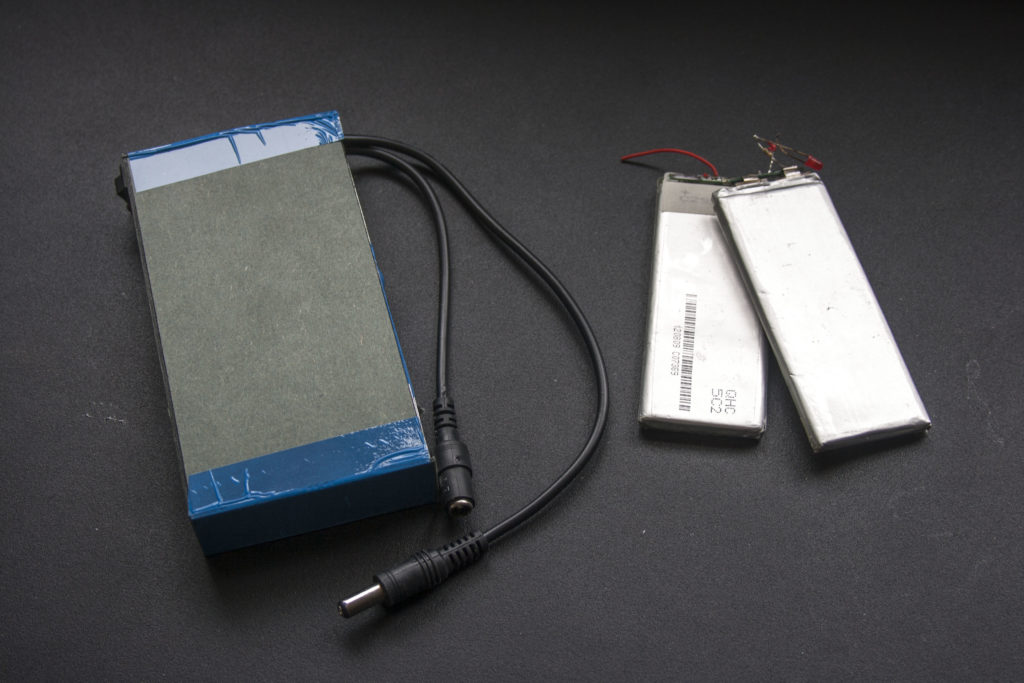
So how can you avoid getting one of these bad recycled batteries? Good question! You could avoid them buy buying one of the expensive name brand power banks on Amazon, but who wants to spend $65 on a battery just because it says Energizer on the front and has a fancy enclosure you’ll never see inside the proton pack?
Thankfully, I’ve done the legwork for you! At least for those of you in the USA or who can purchase from Amazon. If you’re outside the US you can try to find the same manufacturer, but don’t assume that just because a battery on ebay has a black case like this, that it’s good. There are a lot of fakes built just as badly as the blue bricks above.
Here’s the link to purchase this battery in the US:
http://www.amazon.com/Talentcell-Rechargeable-6000mAh-Battery-Portable/dp/B00MF70BPU
And if you’re overseas, you can find a similar Talentcell battery here, with added USB port:
(Ignore the appearance of the LEDs on the battery at the storkz link. The photo is incorrect.)
How do I know this is a good battery? I disassembled it!
You can see this battery is well built! Thick metal tabs connect the over current/discharge protection + balance charging circuit to the batteries, and the circuit itself looks to be of very high quality construction. And unlike the blue brick, this power bank uses cylindrical cells instead of pouch cells. These 18650 cells are very common, and have some safety features that the lighter more compact pouch cells don’t. I personally have not heard of these type of cells swelling up or catching fire. Also, check out that date code: 2016-03-03. March 3rd of this year! These batteries were made only two months ago! No recycled crap here.
Unfortunately I can’t tell by the numbers on the cell what its capacity is, so there’s no way to know if I was cheated on that, but based on the number of cells and the minimum capacity you can get these cells in, there should be at least 4800mAh in there, and based on how long the pack took to charge with the 1A charger they supplied, the advertised 6000mAh is probably accurate.
This power bank unlike the blue batteries doesn’t have two cables coming out of it, but it does come with a Y adapter cable that serves the same purpose:
And here you can see how you would connect the charge port and power switch harnesses for the proton pack kit to the battery:
Finally, if you must order a battery from ebay, then I would look for one with screws on the back like this one. Screws on the back means they aren’t trying to hide what’s inside. And it means you can check to see what’s inside. You could also ask the person selling the pack if it contains 18650 or pouch cells and if they are new. Pouch cells aren’t necessarily bad if you know you’re getting new ones. I just suggest trying to avoid them because it seems like all the fake batteries use those because those are what are found in most used cellphones and laptops and other used electronic devices. The 18650 cells are most often used in power tools, and nobody throws those out until they’re good and dead.
Update 10/20/2017:
The battery at the Amazon link above now looks slightly different, with LEDs on the front to indicate the charge level. I have not done a full teardown of this new version, but I purchased one and on quick inspection it seems to have the same heft and build quality as the original, so I still recommend it! The battery at the storkz link is this newer model as well, but with the addition of a USB port!

